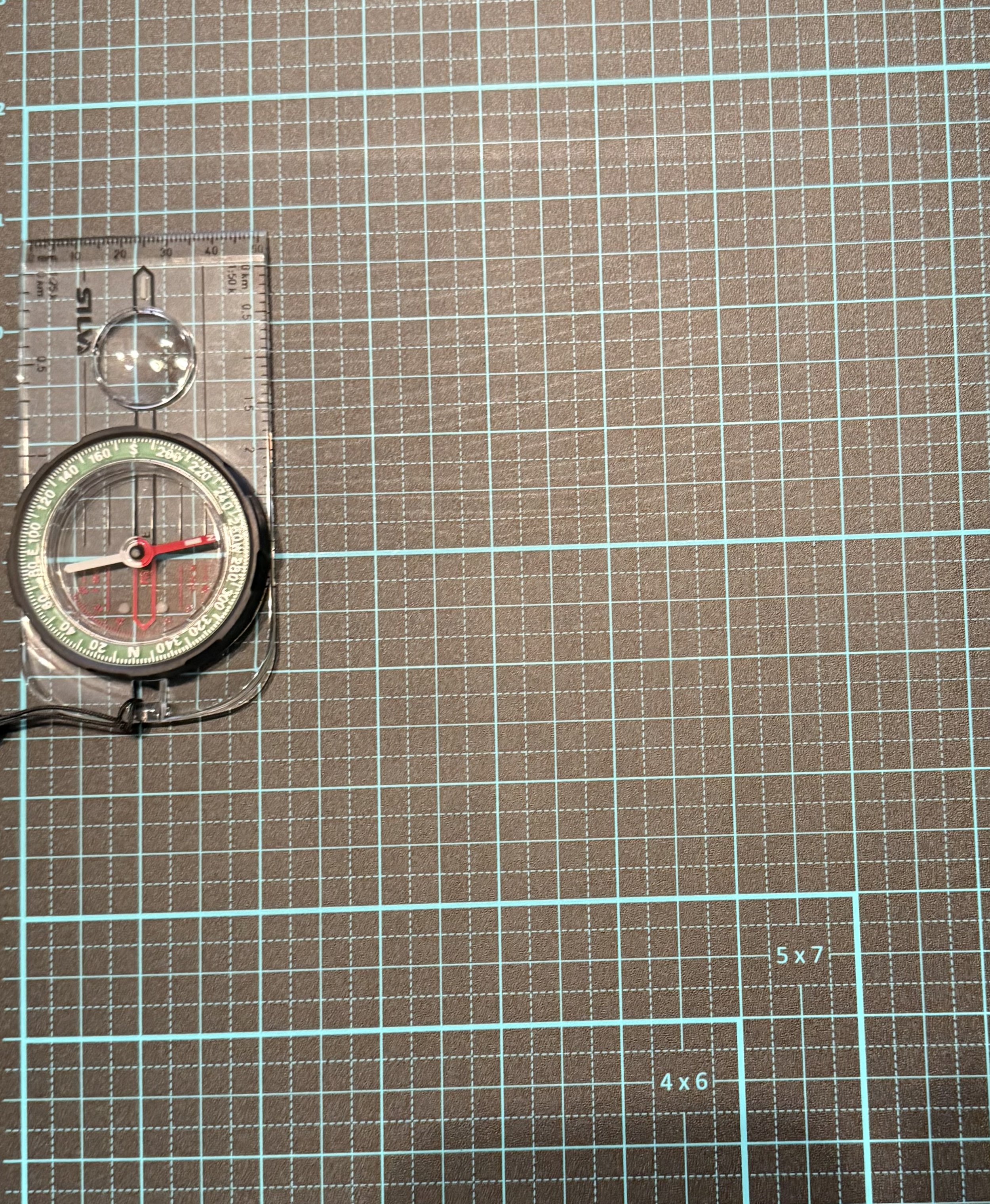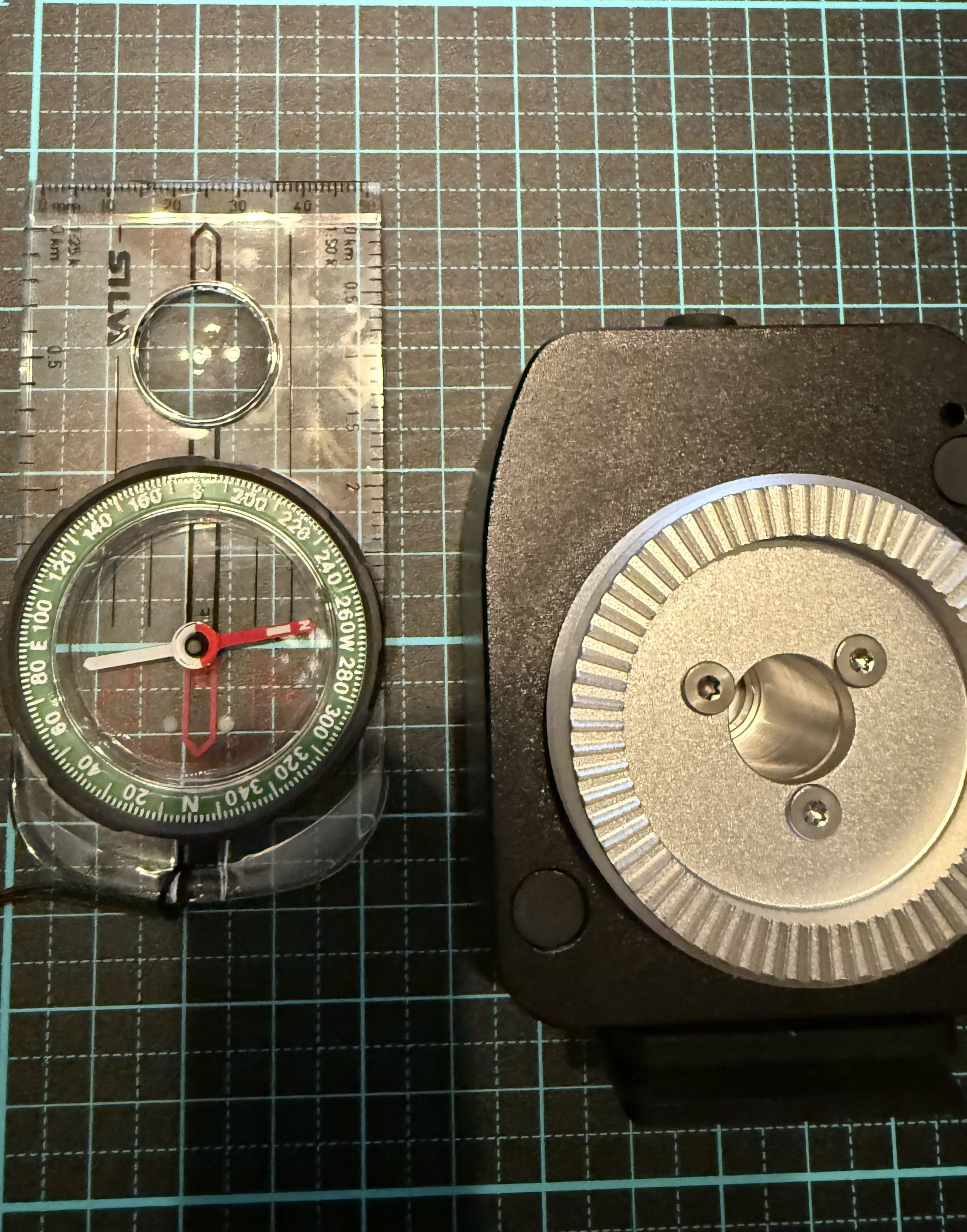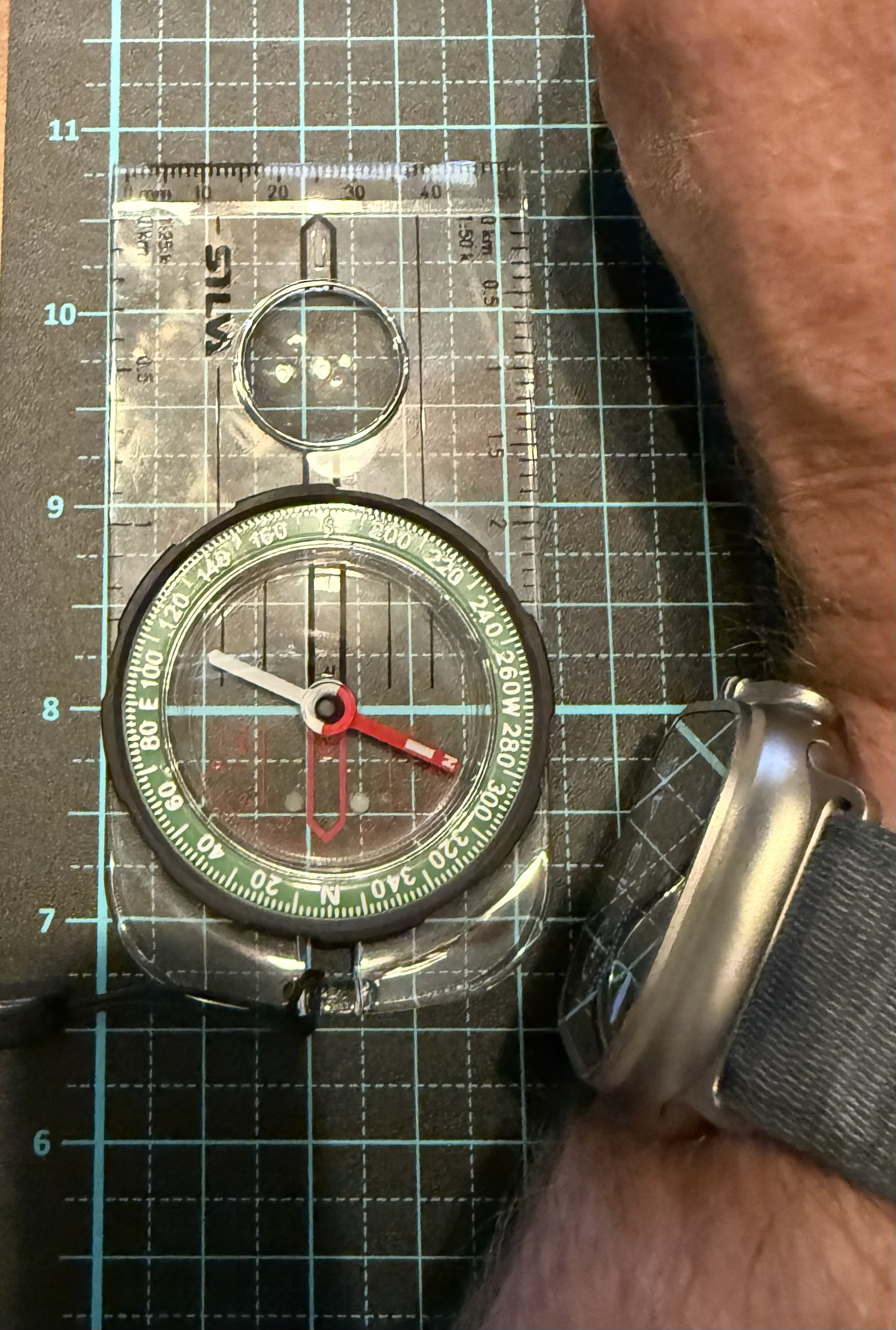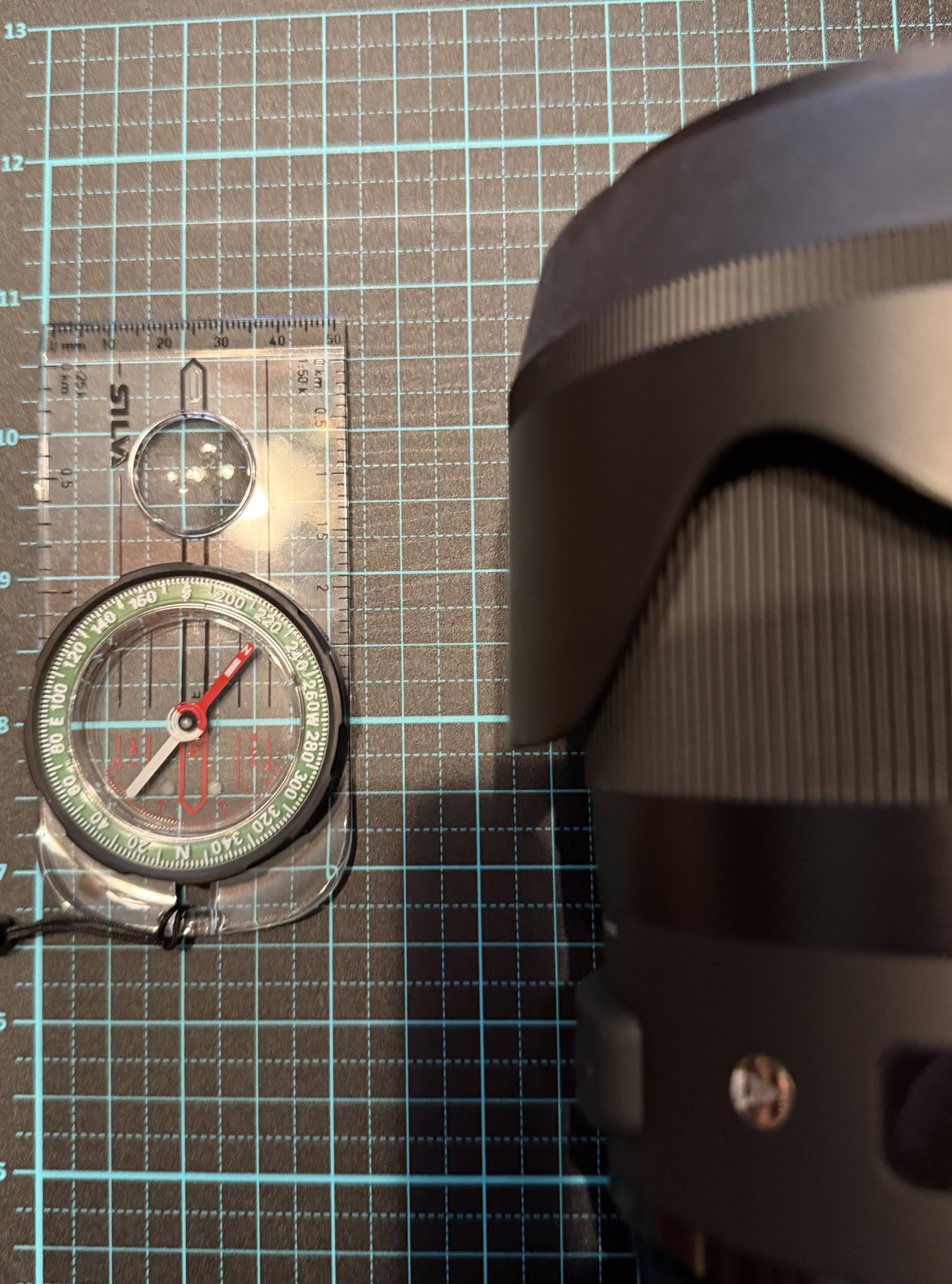So what can screw up polar alignment?
My standard set up these days for star tracking. This was polar aligned, until I bought another iPhone close the rig!
As is well known by now I have followed the lead of a lot of great astrophotographers out there and polar align my Nomad star tracker using my phone and the Sky Safari app. I liked this method so much I designed my own phone holder to make it even easier. However a question I often get asked is “Doesn’t the tracker interfere with the compass in the phone?” My experience has been it doesn’t, but some other parts of my gear definitely seem to, so being a scientist by training I could not resit doing an experiment.
The experimental set up, simple enough. A compass on a gridded mat.
The tracker had no significant effect on the compass (I did repeat this with the amount and bullhead, it didn’t make a difference). The tracker was turned off for the trial.
The setup was very simple. Put a compass on a guided mat and then place the tracker close to it in the same orientation that it would be in my photography set up (why not use the compass on my phone, ahhh…. was using it to take the photos). The good news was, as you can see in the photos above, that the tracker did not impact the compass so I think it is safe to assume that it is not causing any problems when I am polar aligning out in the field. This supports my practical experience as I have been getting great tracking using the phone mounted next to the tracker. Next, time to test another suspect.
The smart watch had a definite impact.
A number of YouTubers and bloggers had commented that smart watches could be a problem, and the test showed that this was the case with the compass showing a clearly different direction when I bought my smart watch close. Probably suggests it is best practice to take it off when you are polar aligning (and perhaps to hold your compass in the opposite hand if you are navigating through the jungle).
One of my favourite lenses had a huge impact.
Next I decided to look act the impact of a lens and camera. As you can see above, one of my favourite lenses, the RF15-35 f2.8 had a massive impact swinging the compass by about 90 degrees. The camera, autofocus and image stabilisation were all turned off. The effect was only short range and seemed to disappear totally if you moved the camera 50-60cm away, but it is definitely real. The amount of deviation also depended on the orientation of the camera. It shouldn’t be surprising that this happens because modern lenses such as this have powerful motors, containing coils and permanent magnets in them for the autofocus and image stabilisation functions and would create a field even if turned off. Below is an image with another of my favourite lenses, The Sigma Art 20mm 1.4. As you can see it had a significant impact as well.
The Sigma art 20mm 1.4 also had a significant impact, autofocus was turned off in this trial.
Interestingly the, camera without the lens did not seem to have a significant impact, so perhaps a simpler manual focus lens and camera would not cause problems. Unfortunately I did not have one around to test. Also, I have noted that in the field, depending on the orientation of the camera it does not always seem to be an issue, but this is hard to replicate and could be just the direction it is pointing.
So, given these trials I think that if I stick to the process of aligning the tracker with a phone before putting the camera on the ball head (and keeping my smart watch in my pocket) I will continue to get really good polar alignment and nice long trail free images.
Ground breaking science, nah. But still nice to know.





